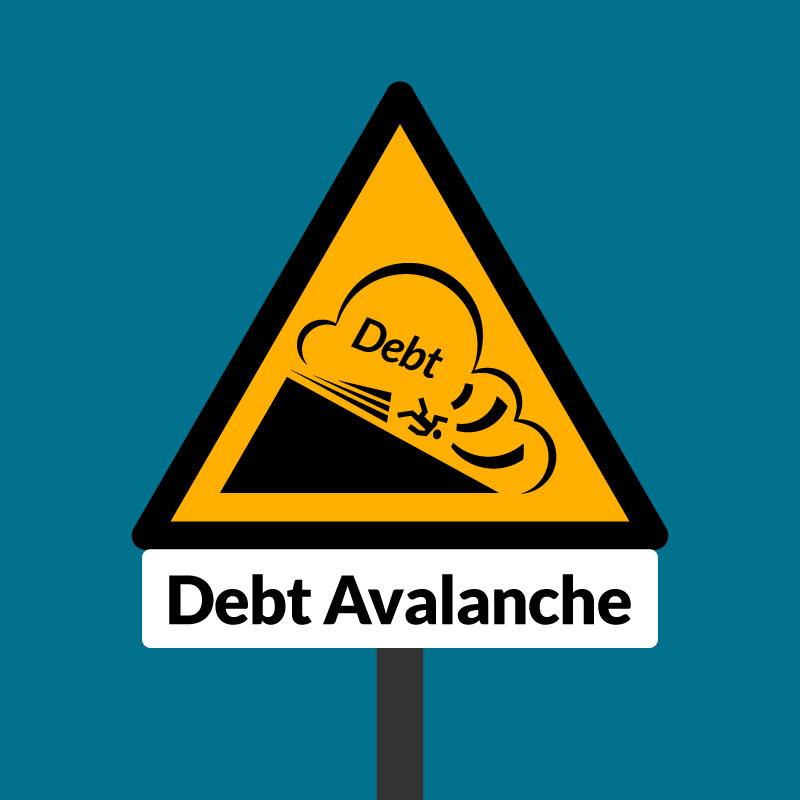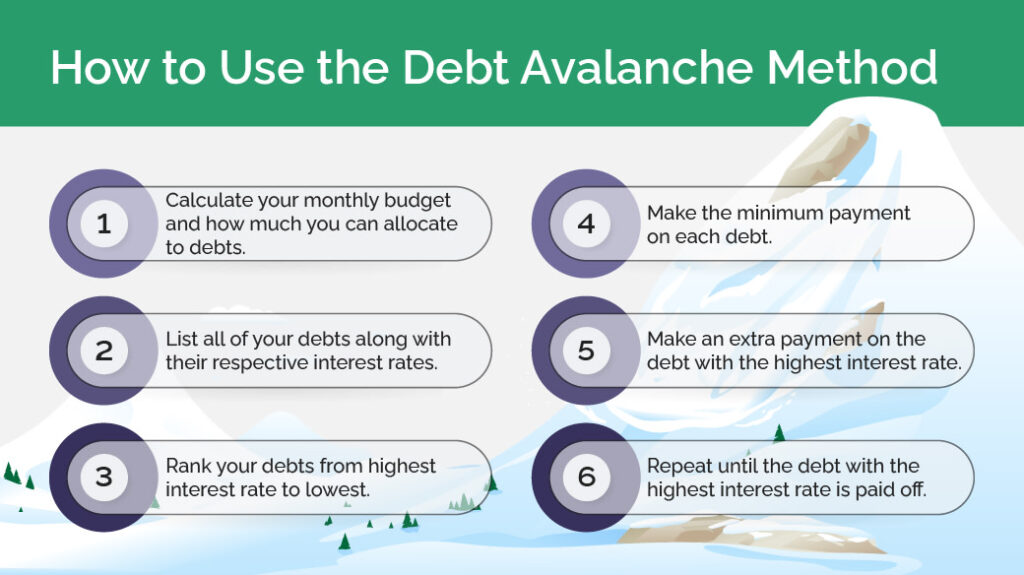
Managing debt can be a daunting task; however, the Debt Avalanche Method provides a structured and effective approach to address it systematically.
This method emphasizes prioritizing the repayment of debts with the highest interest rates first, which ultimately leads to significant cost savings and reduced financial stress.
In this discussion, we will examine how the Debt Avalanche Method operates, the various types of debt to which it can be applied, and the advantages it offers.
A comprehensive step-by-step guide will facilitate the implementation of this effective strategy, paving the way toward financial freedom. Prepare to take control of your debt.
What is the Debt Avalanche Method?
The Debt Avalanche Method is a highly effective financial strategy designed to reduce total debt while minimizing interest accumulation over time. This approach involves prioritizing debts based on their interest rates, enabling individuals to focus on paying off higher-interest debts first.
By doing so, they can minimize overall financial obligations and enhance cash flow. Systematically addressing these debts can lead to substantial interest savings and ultimately facilitate the attainment of financial freedom and stability.
How Does the Debt Avalanche Method Work?
The Debt Avalanche Method is an effective strategy for debt repayment that focuses on systematically addressing debts with the highest interest rates first, while making minimum payments on other debts. This approach optimizes the payment hierarchy to facilitate efficient debt reduction. It is often listed along with the popular debt snowball method.
To initiate this process, individuals should compile a comprehensive list of all debts, organized by their interest rates from highest to lowest. This enables a clear visualization of the overall debt situation and highlights areas of greatest financial pressure.
Once the debts are prioritized, the subsequent step involves directing any additional payments towards the debt with the highest interest rate. This strategy significantly reduces the total interest paid over time.
As individuals observe a reduction in the balance of their highest-rate debt, they may experience a notable psychological uplift, which can serve as a motivating factor in adhering to their repayment plans.
It is essential to maintain discipline in financial habits, as this fosters a sense of control and accomplishment, which in turn reinforces positive behaviors in managing personal finances.
What Types of Debt Can the Debt Avalanche Method Be Used For?
The Debt Avalanche Method is applicable to a wide range of debt types, including unsecured debts such as credit card balances and personal loans, as well as secured debts like mortgages and auto loans.
This versatility positions it as an effective financial strategy for managing debt.
Can the Debt Avalanche Method Be Used for Credit Card Debt?
The Debt Avalanche Method is particularly effective for managing and repaying credit card debt, which typically incurs the highest interest rates among common types of debt.
By prioritizing the repayment of these high-interest debts, individuals can substantially reduce the total amount spent on interest over time. This method promotes a strategic approach to debt repayment, whereby one allocates additional funds towards the credit card with the highest interest rate while continuing to make minimum payments on other debts.
As the primary debt decreases, individuals not only save on interest charges but also experience an increase in motivation as they observe tangible progress. The psychological advantages of alleviating burdensome debts can enhance financial confidence and provide relief, ultimately encouraging a more disciplined approach to personal finance.
Can the Debt Avalanche Method Be Used for Student Loan Debt?
The Debt Avalanche Method can be effectively applied to student loan debt, allowing borrowers to reduce interest costs over the duration of the loan by prioritizing high-interest loans first.
This strategy is especially pertinent when examining the distinctions between federal and private student loans. Federal loans frequently offer more flexible repayment options and potential forgiveness programs, whereas private loans generally have higher interest rates and less flexibility.
It is essential for borrowers to have a comprehensive understanding of the terms associated with each loan type, including interest rates and possible penalties for late payments.
To manage monthly payments effectively, establishing automatic payments can help prevent missed deadlines. Additionally, creating a structured repayment timeline by breaking down the total debt into manageable segments can provide clarity and motivation as borrowers track their progress.
Can the Debt Avalanche Method Be Used for Mortgage Debt?
The Debt Avalanche Method is primarily designed for managing unsecured debts; however, it can also be advantageous when applied to mortgage debt, especially in the context of high-interest components within a mortgage structure.
By implementing the principles of this method, borrowers can strategically prioritize their payments toward those mortgage elements that bear higher interest rates, thereby minimizing the total interest paid over time. For example, if a homeowner has a first mortgage with a lower interest rate and a second mortgage or home equity line of credit with a significantly higher rate, allocating additional funds toward the latter can result in substantial long-term savings.
Additionally, exploring refinancing options to consolidate debts or reduce interest rates can enhance the efficacy of this approach. Understanding the current interest rate environment is crucial in determining whether refinancing represents a cost-effective strategy, as lower rates can significantly impact overall repayment amounts and timelines.
What Are the Benefits of Using the Debt Avalanche Method?
The Debt Avalanche Method presents several significant advantages for individuals seeking to attain financial freedom. These advantages include:
- Considerable interest savings
- Increased motivation for debt repayment
- A structured framework for effectively prioritizing debts
1. Saves Money on Interest
One of the primary advantages of the Debt Avalanche Method is its capacity to save substantial amounts on interest payments over time, thereby allowing individuals to allocate more funds toward principal repayments.
By prioritizing high-interest debts, such as credit cards with rates often exceeding 20%, individuals can significantly decrease the amount of interest accrued on a monthly basis. For example, if an individual possesses credit card debt of $5,000 at an interest rate of 22% and opts to pay down a lower-interest loan instead, they may incur over $1,000 in additional interest within just a few years.
Conversely, by focusing on the high-rate credit card, they can potentially save thousands in interest costs, which can then be redirected toward building an emergency fund or saving for retirement.
Therefore, this strategy not only accelerates the process of debt reduction but also advances individuals toward their long-term financial objectives.
2. Motivates Debt Repayment
The Debt Avalanche Method not only emphasizes financial outcomes but also plays a pivotal role in motivating individuals to maintain discipline throughout their debt repayment journey.
By systematically prioritizing high-interest debts, individuals can experience a gradual sense of accomplishment as their outstanding balances decrease. This tangible progress serves as a powerful motivator, instilling confidence and reinforcing the belief that achieving financial freedom is attainable.
In conjunction with this method, it is essential to cultivate emotional resilience. Consider employing visual tracking tools, such as charts or applications, to monitor progress and highlight milestones along the way. Additionally, embracing a supportive network can enhance accountability, while practicing mindfulness can alleviate the stress often associated with debt management.
Engaging in small, consistent actions will not only aid in maintaining discipline but also strengthen one’s emotional well-being throughout this challenging yet rewarding journey.
3. Helps Prioritize Debts
This method provides a comprehensive framework for prioritizing debts, enabling individuals to develop an effective repayment plan that aligns with their financial objectives and cash flow.
By establishing a payment hierarchy, individuals can discern which debts necessitate immediate attention and which can be addressed over a longer period. The use of budgeting tools further enhances this process, allowing users to meticulously monitor their income and expenditures.
With a structured approach to debt prioritization, individuals can allocate resources more effectively toward high-interest accounts, thereby expediting the repayment process. This strategic prioritization not only accelerates debt elimination but also promotes a sense of financial stability.
Ultimately, when debts are managed with careful consideration, individuals can concentrate on building savings and investing in their future, resulting in enhanced peace of mind.
What Are the Steps to Implement the Debt Avalanche Method?
Implementing the Debt Avalanche Method entails a systematic approach that guides individuals in organizing and effectively repaying their debts, ultimately leading to financial stability.
Step 1: List All Debts
The initial step in the Debt Avalanche Method involves compiling a comprehensive list of all outstanding debts, which should include details such as current balances, interest rates, and monthly payment amounts.
By carefully documenting this information, individuals can attain a clear understanding of their overall financial situation. It is essential to analyze expenditure patterns and identify debts with the highest interest rates, as these should be prioritized for repayment.
To facilitate this process, utilizing debt tracking applications may prove advantageous, as they offer functionalities to categorize expenses and monitor payment progress. Organizing this information not only enhances effective debt analysis but also serves as a source of motivation; observing progress over time can significantly enhance one’s confidence in managing financial obligations.
Step 2: Rank Debts by Interest Rate
The subsequent step involves ranking debts based on their interest rates, prioritizing those with the highest interest rates at the top of the list to inform repayment strategies.
By implementing this approach, individuals can establish a clearer framework for effectively addressing their financial obligations. Understanding the hierarchy of these debts not only clarifies the allocation of their financial resources but also assists in formulating a structured repayment plan.
By prioritizing the elimination of high-interest debts first, individuals can achieve considerable savings on interest payments over time, which contributes to a more expedited journey toward becoming debt-free. Organizing debts in this manner facilitates a more systematic approach, allowing for efficient budget allocation and progress monitoring.
This methodical ranking ultimately enables individuals to take control of their financial situation and make informed decisions regarding the allocation of their resources.
Step 3: Make Minimum Payments on All Debts
Once debts have been ranked, the subsequent step is to make minimum payments on all debts except for the one with the highest interest rate. This ensures that all financial obligations are met while directing any additional funds towards the prioritized debt.
This approach is essential for maintaining a healthy credit score and avoiding costly penalties that may result from missed or late payments. Effective cash flow management plays a critical role in this process, as it enables individuals to strategically allocate their resources without falling behind on obligations.
By closely monitoring their financial situation and utilizing budgeting tools, such as applications or spreadsheets, individuals can efficiently track payment schedules and anticipate cash requirements.
This proactive strategy not only secures their current financial standing but also establishes a foundation for future economic stability.
Step 4: Put Extra Payments Towards Highest Interest Debt
The fourth step involves allocating any additional payments toward the debt with the highest interest rate, thereby expediting the payoff process and minimizing overall interest expenses.
By adopting this strategy, individuals can effectively reduce the total interest paid over time, enabling them to direct more funds toward the repayment of principal. It is crucial to identify various sources for these additional payments, which may include savings achieved through diligent budgeting practices or potential increases in income, such as those derived from secondary employment or freelance opportunities.
The key to successful debt reduction lies in maintaining consistency and a focused commitment to decreasing debt, as even modest, regular contributions can lead to significant progress. Adhering to this strategy not only brings individuals closer to the goal of financial freedom but also fosters a sense of discipline and accomplishment throughout their financial journey.
Step 5: Repeat Until All Debts Are Paid Off
Continue this process by systematically repeating steps 2 through 4 until all debts are fully paid off, thereby achieving financial stability and liberation from debt.
As each debt is eliminated, the path forward becomes clearer, fostering a sense of accomplishment that is essential for sustaining motivation. Throughout this journey, it is imperative to maintain discipline, as diligent tracking of progress can significantly enhance the overall experience.
By recognizing and celebrating milestones, regardless of their size, individuals are able to acknowledge their hard work and determination. This practice not only provides a necessary boost in confidence but also serves as an opportunity to reassess financial goals, ensuring that they evolve in alignment with one’s progress toward a debt-free future.

Frequently Asked Questions
What is the Debt Avalanche Method?
The Debt Avalanche Method is a debt repayment strategy that focuses on paying off debts with the highest interest rates first, while making minimum payments on all other debts. This method can help save money on interest payments and potentially pay off debts faster.
How does the Debt Avalanche Method work?
The Debt Avalanche Method works by first making a list of all debts, from highest to lowest interest rate. Then, extra payments are made towards the debt with the highest interest rate, while making minimum payments on all other debts. Once the first debt is paid off, the extra payment amount is added to the minimum payment of the next highest interest rate debt, and so on.
What are the benefits of using the Debt Avalanche Method?
Using the Debt Avalanche Method can save money on interest payments and potentially help pay off debts faster. By focusing on high interest rate debts first, the total amount of interest paid over time can be reduced compared to other debt repayment strategies.
Is the Debt Avalanche Method suitable for everyone?
The Debt Avalanche Method may not be suitable for everyone, as it requires a certain level of discipline and commitment to stick to the repayment plan. It may also not be the best option for those with smaller amounts of debt or those who need to see quick wins to stay motivated. Dave Ramsey is not necessarily a fan of the debt avalanche method and prefers that his clients use the debt snowball method instead.
Are there any downsides to using the Debt Avalanche Method?
One potential downside of the Debt Avalanche Method is that it may take longer to see progress on smaller debts with lower interest rates, which could be demotivating for some individuals. It also requires a thorough understanding of one’s debts and interest rates to effectively implement the strategy.
Can I combine the Debt Avalanche Method with other debt repayment strategies?
Yes, the Debt Avalanche Method can be combined with other strategies such as the Debt Snowball Method or Debt Consolidation. It is important to consider individual financial goals and circumstances before choosing a debt repayment strategy.




